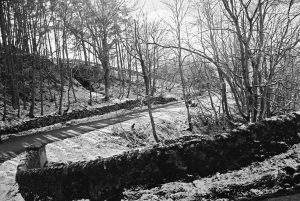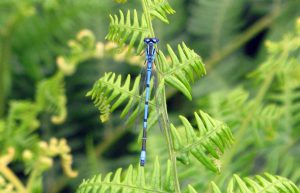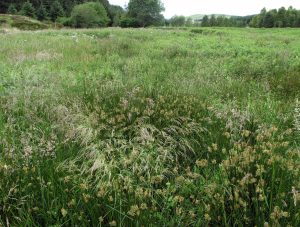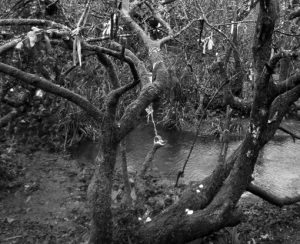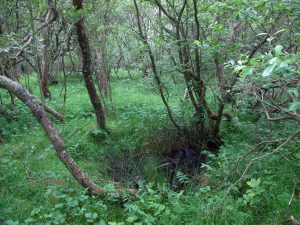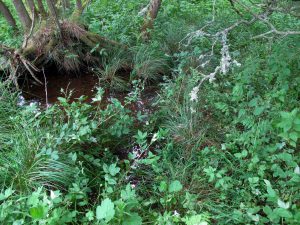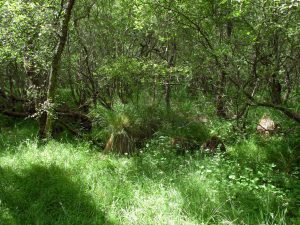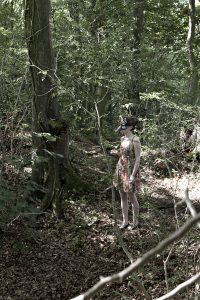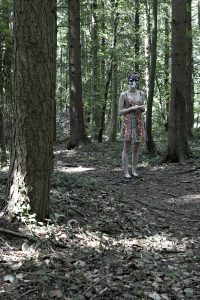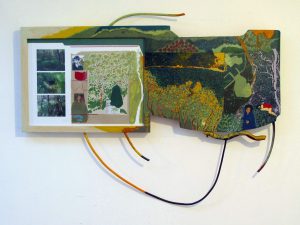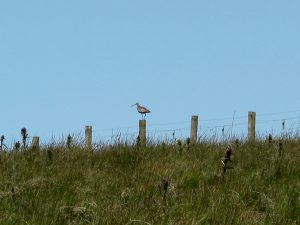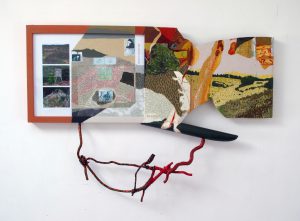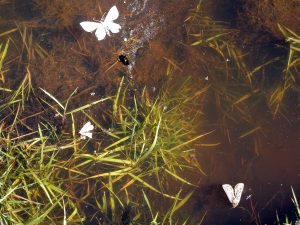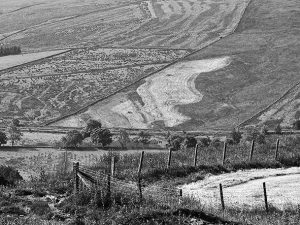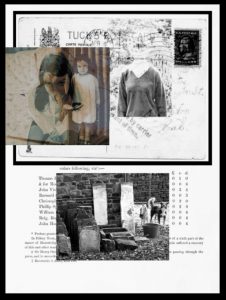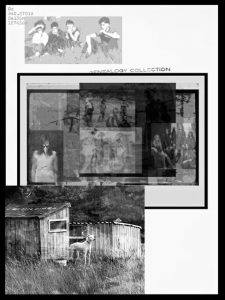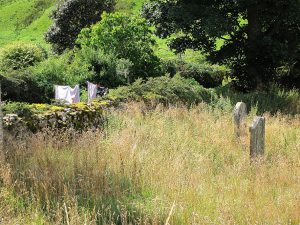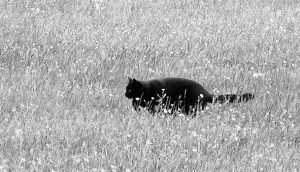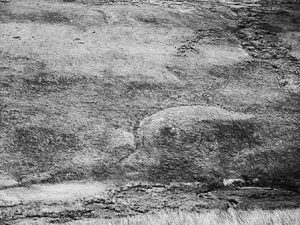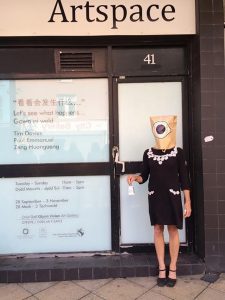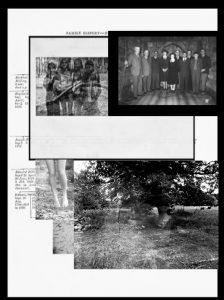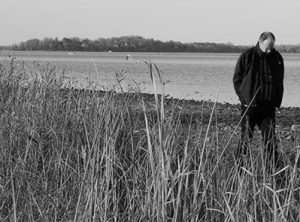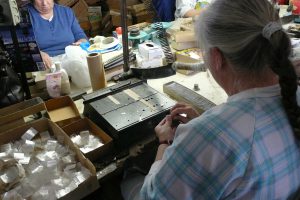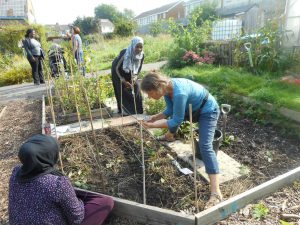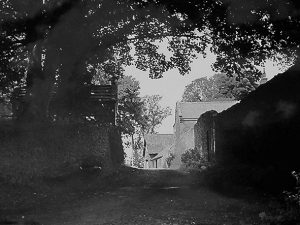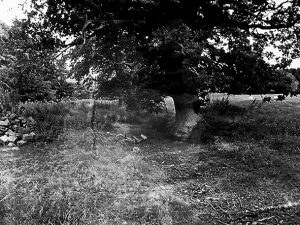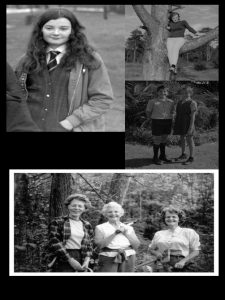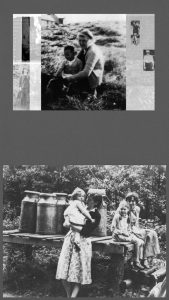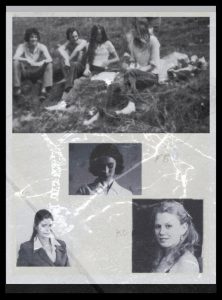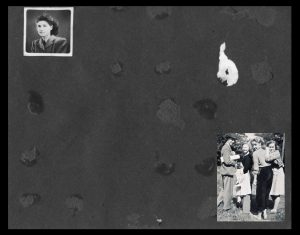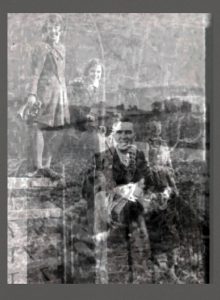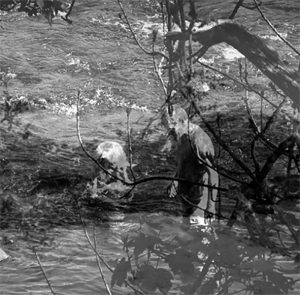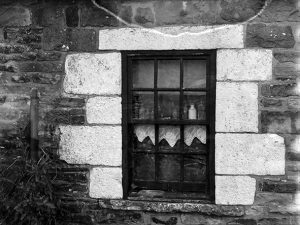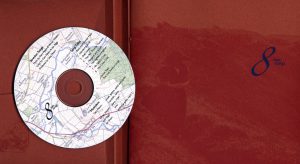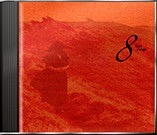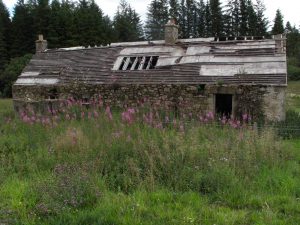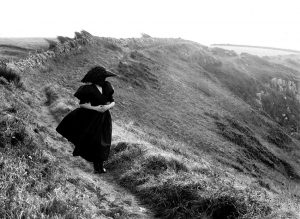Telling Stories
Miss Richardson was Northumbrian born and bred, and had a great fund of old Northumbrian stories that she’d slip into our lessons as pointers to how the world worked. She knew we’d shut our ears to anything that smacked of preaching and so always told her stories accordingly. I still remember some of them. One was about the couple from Netherwitton who are asked to adopt the son of the king and queen of the fairies. The man is then blinded in one eye when he catches the king stealing. She had begun by asked what we thought of old stories about fairies. When we didn’t know how to respond to what seemed to us a silly question, she suggested that if people can’t criticize authority directly, they invent stories that allowed them to draw attention to the injustices they suffer.
The story I remember best was one she told us older children just before I left, about the treasure in Broomlee Lough. The treasure should have been recovered long ago, but a link in the specially forged chain needed to pull it up had broken. I can still feel the pleasure of the shock of her explaining that this was because the smith who had made it was not the seventh son in an unbroken line of smiths as his father claimed. It turned out his father had gone away to Willimoteswick to gamble with the drovers and, while he was away, a bold young tinker had visited the farm. Nine months later his wife had given birth to the boy who became the smith who made the link that broke. She said we shouldn’t allow ourselves to be impressed by people who claimed their family or birth made them special, because everyone has their faults.
Another story, which I appropriated and retold one evening in London when talking politics with Desideria, Giulia, Francesco, Mario and Simon, was ‘The Faa’s Revenge’. It’s about what happens to the people who forget that ‘their’ land is taken from the people who previously tended it; their wealth acquired at the expense of others’ labour. People who fail to respect the basic laws of human compassion. Being the amateur historian that she was, this tale was mixed in with information about Kirk Yetholm, for centuries the headquarters of the ‘Egyptians’ or Gypsies in Scotland. (We’d not then learned to call them Roma). Their king, John Faa, a contemporary of King James V, had been granted a letter under the Privy Seal that confirmed his authority over all his people in Scotland and required all sheriffs in the country to assist him in maintaining the laws of ‘Egypt’.
In my mind, I always link of this story to the old Border ballad I associate with John Faa’s people: which Child calls ‘The Raggle Taggle Gypsy’, but is also known as ‘The Raggle Taggle Gypsies O’, ‘The Gypsy Laddie’, ‘Black Jack Davy’ and ‘Seven Yellow Gypsies’, but I know next to nothing factual about Faa himself. There is, however, a story that presents a very different tale to that in the songs. Namely that Faa ran away with the Countess of Cassillis and that her husband followed them and caught them at a ford over the river Doon, still known as the Gypsies’ Steps. He then forced his wife to watch from an upstairs room while he had Faa and his followers hanged in front of the Castle Gate at Cassillis. She was then said to have been imprisoned for the rest of her life. While Faa’s role as king of ‘Little Egypt’ is historical fact, there is absolutely no evidence to support the story of John Faa and the Earl of Cassillis’ wife.
‘Jan. 1979’
Laura
Iain, even now I find writing about Laura difficult. The facts are straight forward enough. Laura was Hamish’s imaginary friend and, apparently, my ‘lost’ twin sister. (Just how or why she was lost I was never told, but she was supposed to have disappeared soon after we were born.) Literally speaking, then, Laura was simple a fiction. But, because of being a shared secret I never participated in first hand, because of things that happened and didn’t happen between Hamish and me later, and because she became all too real in my dreams, it’s all rather more complicated than that.
I can’t find the James Hillman quote in the first Debateable Lands book just now, but the gist of it has stayed with me. That we don’t die alone but join the ancestors, the little people, the whole multitude of compound souls who inhabit our nightworld; the various complexes we talk to, the invisible friends who pass through our lives, all with their gifts of desires, fears, regretful sighs, surprising ideas. The multitude who accompany us all along, both angelic and demonic figures. Both angelic and demonic accomplices who, like the beasts in Rilke’s first ‘Duino Elegy’, are aware that we’re not really at home in this interpreted world but, as with habits, liked us and lodged, never gave notice. I think many children, like the animals they often feel closest to, notice how literally, reductively, adults take the world. Literally, of course, in large part to avoid having to acknowledge the ancestors and accomplices who give the lie to our belief that we are self-contained, self-sufficient monads. All of which is a way of saying I’ve come to think differently about Hamish, so haunted by his feared father’s obsessive vocation, and by all the ghosts of dead priests and academics who created the family library going generations back. Haunted too, I suppose, if only for a while, by me, Laura’s supposed twin sister. But all this relates, strictly speaking, to the time when Laura had gone to ground after my arrival in the village.
Hamish had been a sickly, and an unhappy, child. His maternal grandmother cared for him much of the time when he was small because his father insisted his wife put parish business first. His grandmother had worked as a librarian at Edinburgh University until she married a Classics professor twenty years her senior. When the Professor died, she moved south to be near her only daughter. Mrs. Laidlow read Hamish fairytales and all manner of poetry, including Petrarch’s The Canzoniere, which is maybe where the name ‘Laura’ came from. She knew perfectly well that her son-in-law regarded fairytales as an irrelevance in a properly Christian culture, and thought secular poetry was produced by unbelievers and degenerates. I like to think that’s why she read them to Hamish.
Hamish never spoke to me about Laura and I never asked him about her. I think he must have been afraid I’d tease him or challenge his story. I know, however, that before I arrived, Laura was the great secret he shared with a select few: Patsy, Cat, and two other girls at school, Mary Bell and Barbara Dunne. She became the central figure in their imaginative lives until my arrival broke the spell.
This seems to be what happened, pieced together from what Cat and Patsy later told me. They all somehow missed the announcement that a little girl called Flora was to join them next term, all except Patsy, and she misheard it. In high excitement, she told the others that the teachers had said Laura was coming to join them at school next term. I don’t know what Hamish made of this, only that Laura’s imminent arrival ‘in the flesh’ caused some consternation.
Hamish had enthralled the four girls with stories of Laura’s adventures for several months. Although Cat always insisted she knew perfectly well they were ‘just make-up’, Patsy insisted they all wanted very badly to believe in Laura. At that time Hamish had that pale, slightly unreal, aura of someone recovering from serious illness, so it no doubt it seemed entirely possible to them that he’d know about a mysterious girl who lived alone in the moss. Someone adults mistook, if she appeared in their peripheral vision, for a vixen, a roe doe, or a brilliant dragonfly.
Laura lived in Lady Moss and the surrounding woodland.
Later, when I learned ‘Long Lankin’, I used to imagine Laura and Long Lankin sharing a shelter there, with her listening to his muttering about the wrongs done to him and the terrible revenge he’d take. But Hamish was talking about our moss, one of the rare places that, as primary school children, we were expected to stay away from. Not, as far as I remember, forbidden because adults thought it was particularly dangerous (it wasn’t), but because it was simply somewhere they’d rather we didn’t go.
This, of course, made our going there essential if we wanted to earn the respect of our peers. There was, however, a ritual to be observed when making such a visit. You always told a friend you were going to the moss, you went alone, and you marked your visit by adding a little stripe of fabric with your first name written on it to the old tree right in the heart of the moss. Judging by the amount of old, decaying cloth there when I was a child, this ritual had been observed for a long time. Whether the moss was originally home to a ‘clootie’ tree I simply don’t know, but its name suggests it might in some way have been connected to either the Virgin Mary or to the Queen of Elphame.
Located between a big Sitka spruce plantation on one side and a string of small upland fields, our wooded moss lay just to the north of a flat, meandering section of Black Burn. With its dim light, numerous moths, tangle of stunted birch roots, dark pools, and sense of almost uncanny stillness, the moss was a perfect place in which to imagine Laura.
Patsy later told me that, after I turned up, Hamish quickly explained me away by saying the grownups had made a mistake. I wasn’t Laura but her very ordinary twin sister, and that I didn’t know a thing about her because she’d been stolen away.
When I was a girl, I tended to assume that Hamish was just naturally quiet, since that’s how he usually was when we were together. Later I wondered whether his silences weren’t the result of his being deeply preoccupied, working out how to locate me in relation to Laura, his first and perhaps deepest, all-be-it imagined, love. Did he really see me as her twin, or as her pale shadow or, later, perhaps as her uncanny, uncertain double; perhaps even as a dubious, ultimately illusory, seductress sent to make him forget her? Our imaginal life works in such odd ways any of these seems possible.
Quite some while after we split up, a figure I just knew was Laura started haunting my dreams, my ominous darker-haired, sharper-faced doppelganger. Her persistent presence eventually became frightening and, in the end, I had to exorcise her by making a ‘Laura’ mask for a little ritual where I ‘became’ Laura. (Why this took the form of a stylized fox’s head I don’t remember, but no doubt it was suggested by the dreams.) I got a friend to photograph me wearing it, to evidence the fact that I had finally ‘become’ Hamish’s Laura. But still, occasionally, there’s this young girl’s voice in my head that tells me I’m just imaginary, an invisible part of someone else’s kith!
I have wondered about Laura and her animal forms since I learned of the widespread folk beliefs that a person’s spirit can take possession of an animal, often to help the living in some way. You’ll remember our discussing the idea that children have a sense of themselves as emerging out of a field of forces and materials too big for them to grasp, only some of which are captured in their current, human, form? I suspect Hamish was just such a child, somebody who was troubled with illness and an unhappy home life and didn’t make the conventional absolute distinction between humans and the animals and insects he saw around him on an almost daily basis. So, Laura could also be a fox, a roe doe, a dragonfly, as well as a girl. Just as like so many girls in old songs who take animal form and then, as often as not, are killed accidently by their lovers.
I’ve also linked all this to A.’s comment in your book that he was all for permeability, which he linked to explorations of various figures from old folk cultures: the Mistress of the Animals, the Women from Outside, Artemis, Richelle, the Mistress of the Game, Oriente, and the Queen of Elphame. All these powerful figures who could move between the visible and invisible, the worlds of humans, animals and the dead. After his beloved and awe-inspiring Nana’s death, maybe the poetic figures she’d evoked leaked into Hamish’s world, a compound that took the form of Laura?
Sarah Aitcheson wearing the Flora / Faun / Laura mask.

